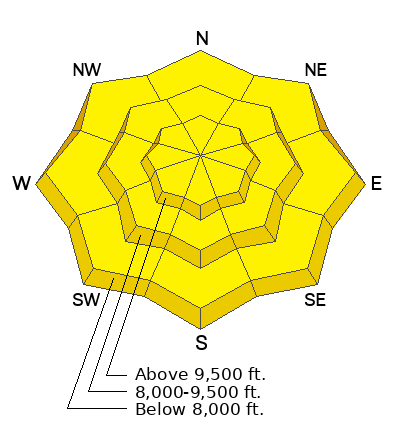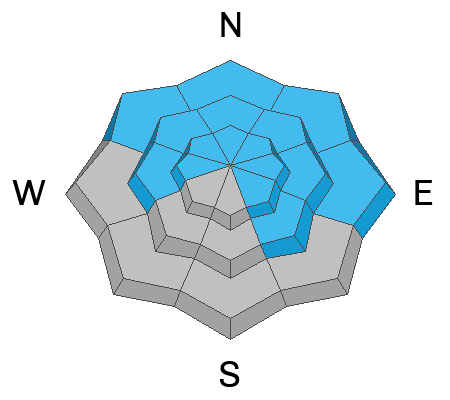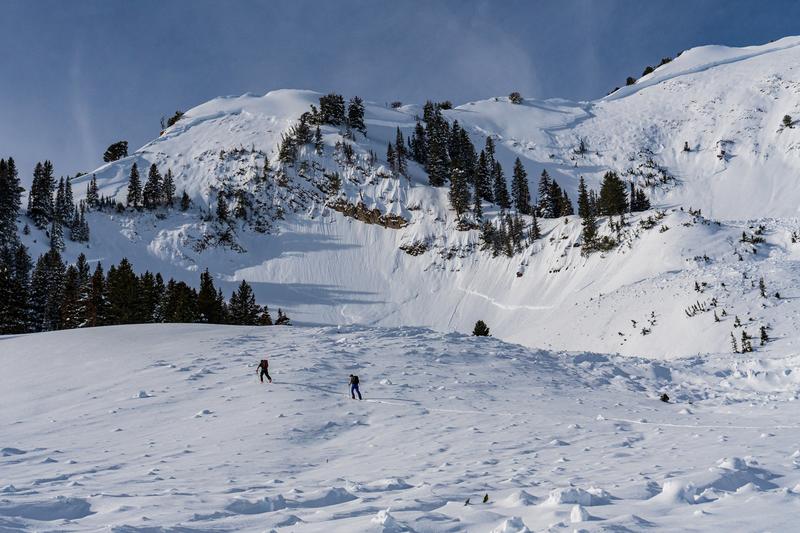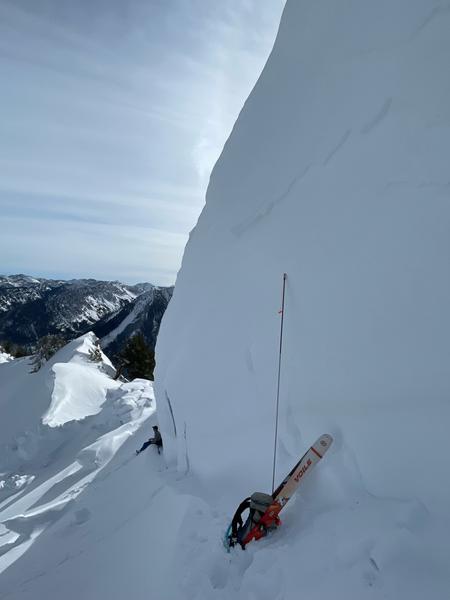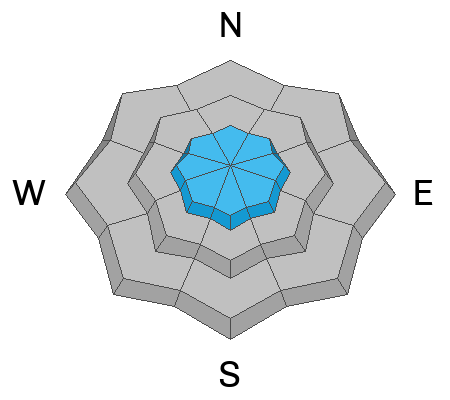Their have been wildlife sightings, including a Momma moose with two calves in Mill D North. Although we all have appreciated the bountiful snowfall this winter, it has been hard on wildlife. Please be respectful of any wildlife you are fortunate enough to encounter by giving them a wide berth.
This Morning: Temperatures have slowly risen overnight with many locations right around 32 F, give or take a few degrees. Winds are from the south/southwest and are light through the mid elevations with gusts in the teens, but are much stronger at upper elevations with averages in the 20's mph and gusting into the upper 30's mph. Warm temperatures and sunshine have left behind a crust on most sunny aspects.
Today: Mostly-cloudy skies with temperatures rising well into the 30's and low 40's F. South/southwest winds will increase by late morning, with gusts in the 20's mph at mid elevations and into the 50's mph at upper elevations.
This Weekend: Increasing winds today are in advance of a series of storms which should bring snow throughout much of this coming week. A few inches of accumulation by late Saturday afternoon, with more substantial snowfall expected Sunday and into the Dr. Martin Luther King holiday on Monday.
Thursday's clear skies provided for first class avalanche viewing, and although I encourage you to spend a few minutes reading through all the
recent observations and
avalanche activity, the large natural avalanche that occurred on
Gobblers Knob into Butler Basin in especially noteworthy. This was on a NE aspect at 10,200. 6-8' deep, 3,500' wide, ran close to 2,000' vertical. Failed on November facets. Trent visited the site on Thursday with retired UAC director Bruce Tremper, and Bruce said he has never seen that avalanche path run this big in his entire career in the Wasatch.
Tuesday's impressive natural avalanche cycle, especially the huge natural near Bridal Veil Falls, remains worthy watching:

